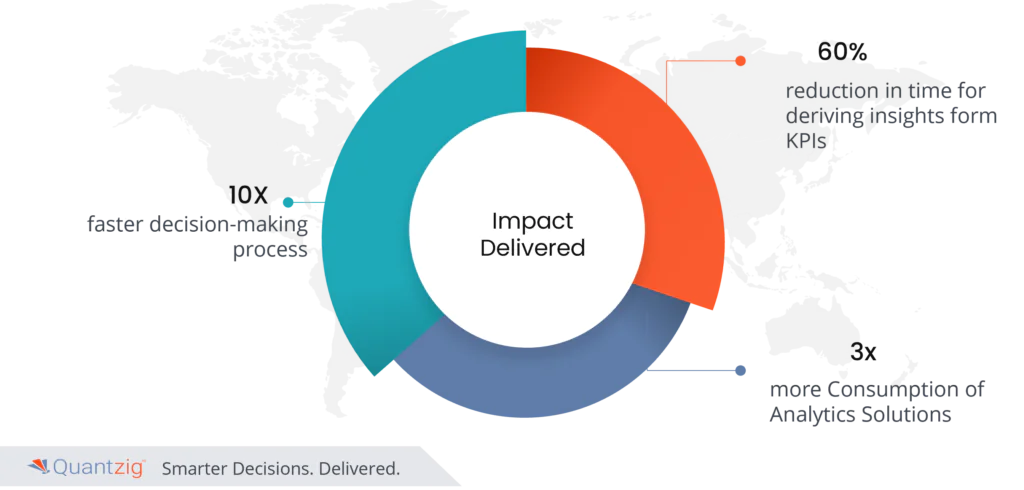Table of Contents
Introduction
In today’s fast-paced business world, it’s no longer enough to maintain up; it’s time to move forward with clarity and accuracy. That is why businesses employ Key Performance Indicators(KPI) as the guide to their decisions. KPIs provide organizations with the tools to measure performance, identify opportunities, and stay ahead of the curve in today’s ever-changing business world.
We’re here to explore the core KPIs every organization should focus on. We will explore how KPIs can lead informed decisions, improve operational effectiveness, and sustain sustainable growth. Join us as we uncover the most important KPIs for business reporting and insights. They provide a strategic edge by transforming complex data into concrete insights.
Importance of Top Essential Key Performance Indicators for Business Reporting and Insights
- Variety and Alignment of KPI – Having a broad selection of key performance indicators (KPI) is crucial for two reasons. First, it allows business teams to choose from a wide range of metrics, customizing their choices to match their departmental objectives. This broad selection of options ensures that KPIs are aligned with the specific objectives of each department within the company. Secondly, a well-structured approach to selecting KPI is essential. It streamlines decision-making, but it also creates a sense of uniformity throughout the company. By providing flexibility and structure in the KPI selection process, businesses provide their teams with the ability to prioritize and enhance KPIs efficiently, creating a culture of decision-making based on data.
- Enhancing Analytics Efficiency – A structured approach to KPIs is essential for all analytics teams. First, it helps you identify and evaluate the most significant and impactful metrics, reducing the time and money. Second, it fosters a clear understanding of KPIs across your organization. This clarity means that analytics teams are united with business teams, enabling smooth communication and alignment. When you implement a structured approach, the analytics teams can focus on the most important KPIs, generate actionable insights and lead your organization to its strategic objectives.
Challenges of Top Essential Key Performance Indicators for Business Reporting and Insights
- KPI Selection and Alignment – It is difficult to achieve a balance between the range of KPI alternatives and the requirement for alignment with certain departmental goals. To achieve this, the selection process must be structured to ensure uniformity while allowing for flexibility.
- Efficient Analytics Integration – The integration of KPIs into analytics processes is crucial for optimizing decision-making. Identifying and prioritizing the most important metrics is essential to reduce resource consumption and provide a clear understanding of KPIs across the organization.
Benefits of Top Essential Key Performance Indicators for Business Reporting and Insights

- Informed Decision-Making – By recognizing and utilizing key performance indicators (KPIs), organizations can make decisions based on data with greater accuracy and precision. Key performance indicators provide a comprehensive overview of business performance, enabling organizations to adjust business operations, optimize resource allocation, and identify areas for improvement.
- Operational Efficiency – Key performance indicators (KPIs) help streamline business processes and boost efficiency. By tracking key KPIs that directly affect business operations, organizations can effectively resolve problems and optimize resources, resulting in lower costs, higher productivity, and improved overall performance.
- Sustainable Growth – Business reporting and insights through key performance indicators (KPIs) enable organizations to grow sustainably. By monitoring and analyzing KPIs regularly, organizations can anticipate growth opportunities, stay ahead of market changes, and stay ahead of the competition in their sector. Sustained growth is crucial for success and long-term profitability.
Success Story
Client Details: A leading Company located in the Europe.
Challenges faced by the Client:
- The clients understood the need to improve the efficiency of their supply chain and their complexity. There was a need to construct a supply chain tower system to do this. This system was intended to serve as a focal point for their corporate operations, streamlining and accelerating them simultaneously. They wanted to eliminate bottlenecks, improve visibility, and ultimately achieve smoother, more agile operations by combining and automating various components of their supply chain.
- The clients sought a strategic partner who could demonstrate the “art-of-the-possible” in terms of Key Performance Indicators (KPIs) in their pursuit of supply chain optimisation. They were aware that KPIs were essential for tracking and enhancing their supply chain, but they need expertise to effectively utilize them.
Solutions Offered by Quantzig
Quantzig organized the supply chain solution KPIs into three distinct categories.
- Base Metrics – Quantzig introduced a major category of “Base Metrics” in our supply chain solutions, such as “Cost Metrics” and “Performance Metrics”. These are strategically located at every node in the supply chain and serve as the basis of our strategy. What makes Base Metrics so valuable is that they provide accurate and moderated alerts. These alerts served as early warning systems, alerting our teams to potential problems before they become bigger issues, and significantly reduce the “bullwhip effect” that can easily disrupt supply chain processes. By organizing and monitoring these metrics systematically, we gave supply chain teams the data and insights they need to prioritize issues and optimize performance throughout their supply chain.
- Predictive Metrics – Predictive metrics are an integral part of our supply chain enhancement strategy. These metrics serve as a bridge between historical data, such as base metrics, and future supply chain needs. Predictive metrics utilized advanced analytics to deliver high-quality predictions and insights. Predictive metrics include critical forecasts such as demand forecasts, day-supply corrections, and shrink and dilution forecasts. By using predictive analytics, supply chain teams effectively addressed issues, improved inventory management, and enhanced overall supply chain performance. By integrating Predictive Metrics, organizations can anticipate and respond effectively to consumer demand, ensuring a seamless flow of goods across the supply chain.
- Prescriptive Metrics – In our supply chain strategy, we introduced “Prescriptive metrics,” which enabled actionable insights for our teams. Prescriptive metrics included key elements such as Material Distribution Plans (MDPs), optimized route plans (ORPs), and warehouse redistribution strategies (WRSs). By utilizing the insights from Predictive metrics, our Prescriptive metrics drove real-time optimization of operational parameters. Prescriptive metrics provided the necessary basis for each team to improve efficiency and agility in their supply chain operations. By utilizing historical information and predictive forecasts, we made informed decisions and executed plans that maximized efficiency, reduced costs, and improved the flow of materials through the supply network.
- As part of our holistic approach to data-informed decision-making, we embarked on a comprehensive KPI journey. We carefully identified a large number of 1000 KPI’s. We categorized and prioritized each KPI into buckets, each one aligned with specific business goals. Based on this solid foundation, we conducted productive design meetings with the business teams where we worked on a highly effective and customized solution for the business processes. By sharing our collective knowledge and insights, we improved our KPI selection and improved our decision-making, optimizing processes, and achieving our strategic business objectives.
Impact Delivered

- 10X faster decision making process
- 60% reduction in time for deriving insights form KPIs
- 3x more Consumption of Analytics Solutions
Implementations/Techstack Used
- Power BI
- Power Automate


